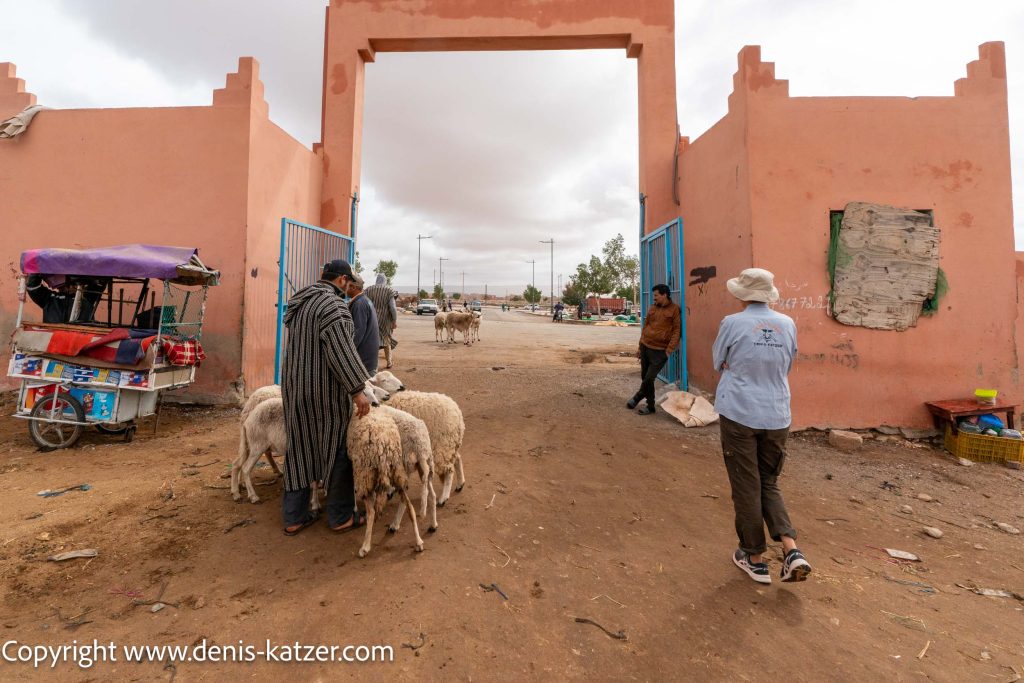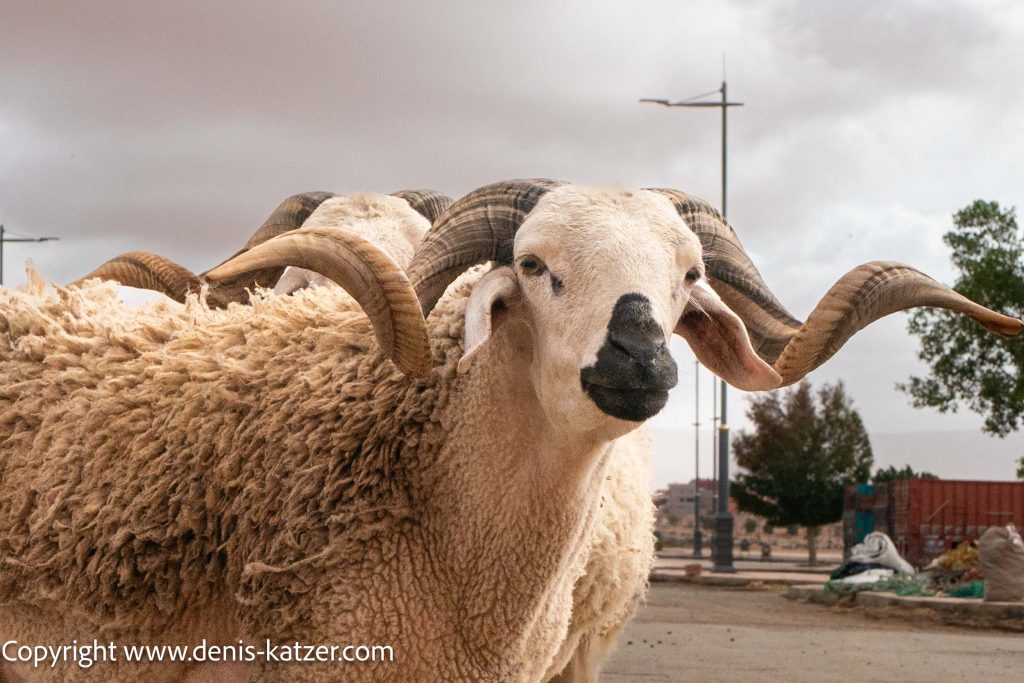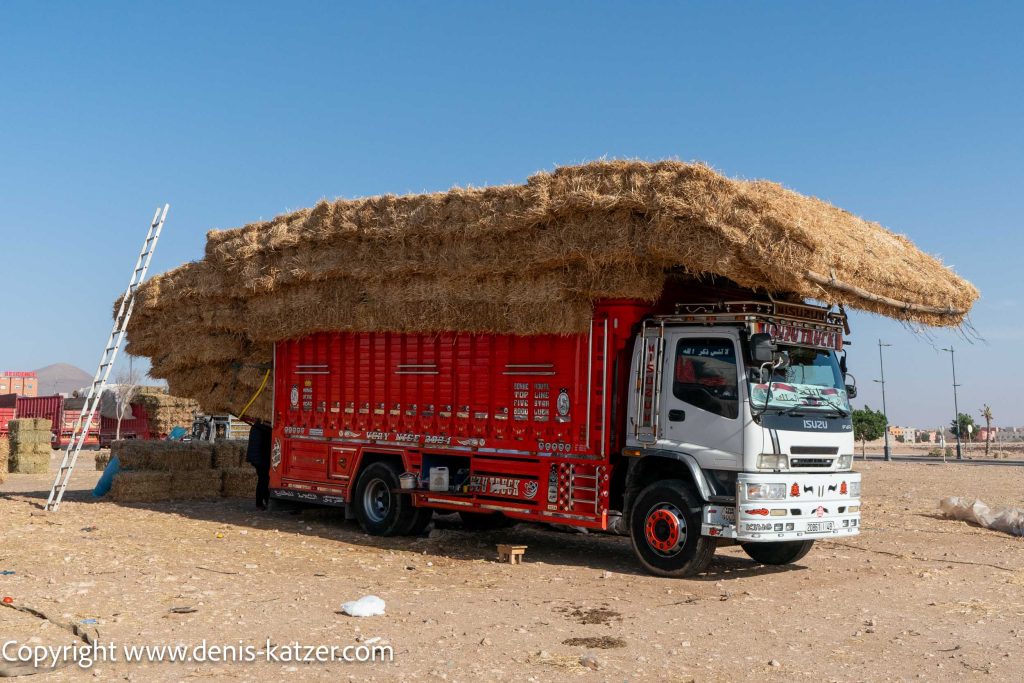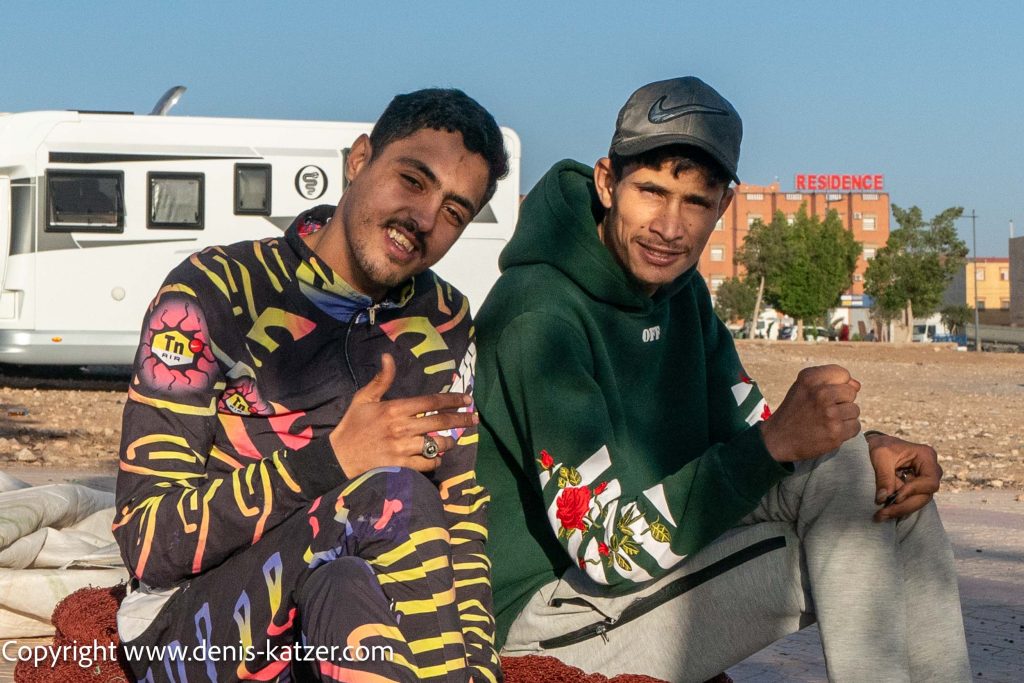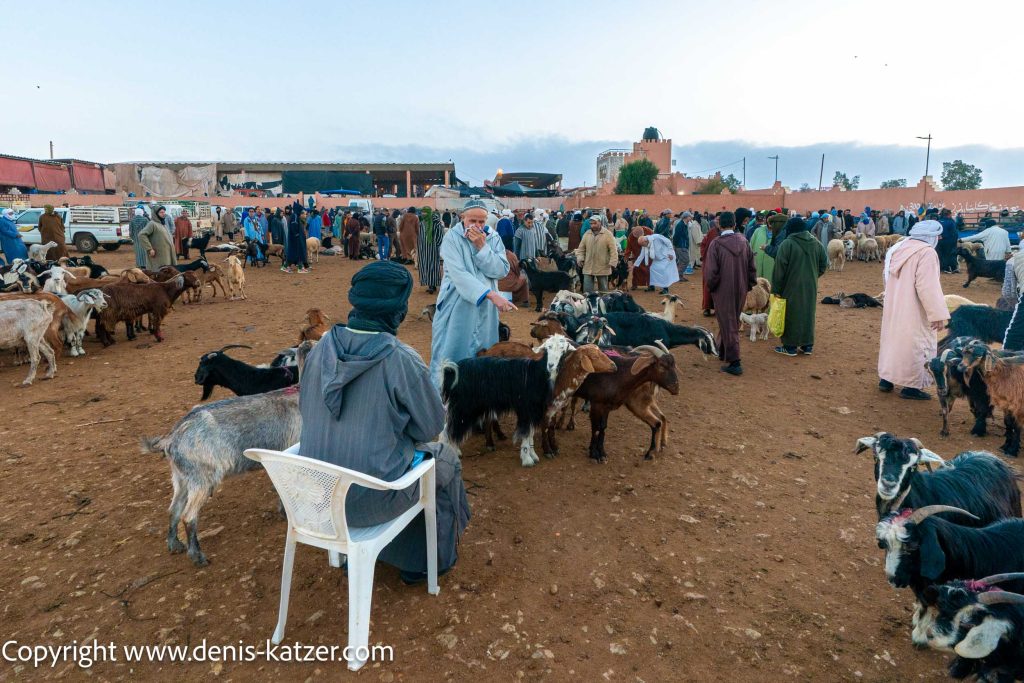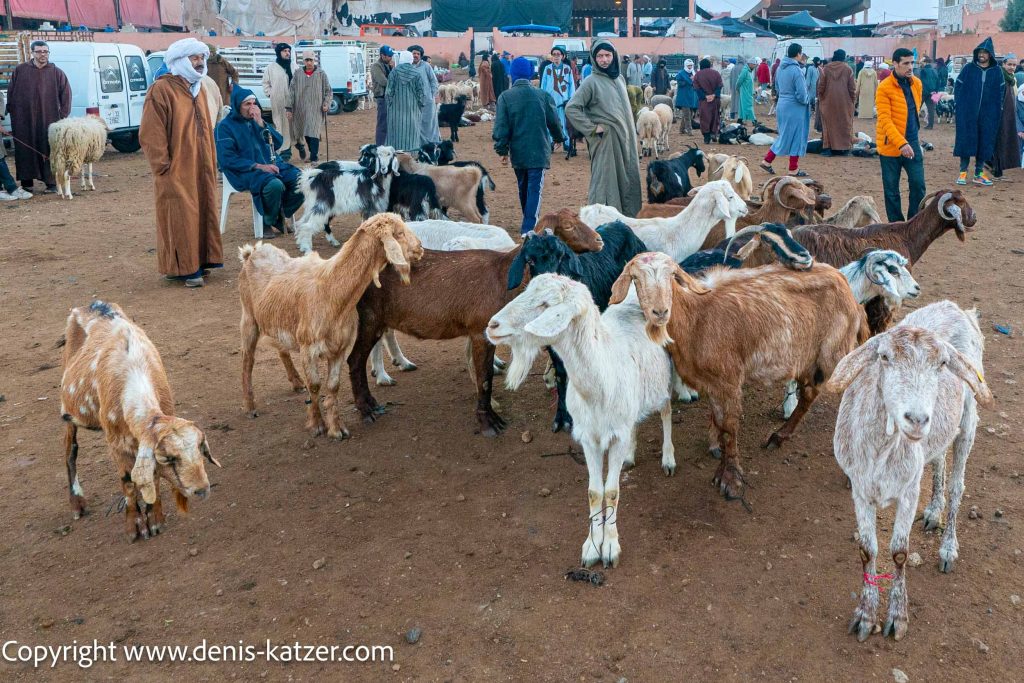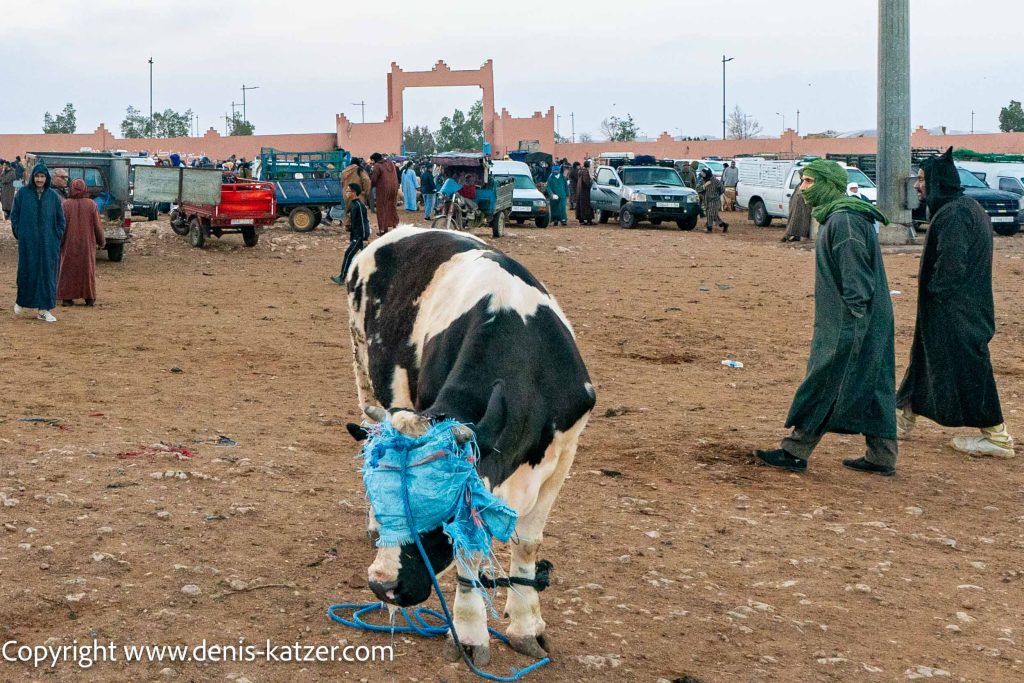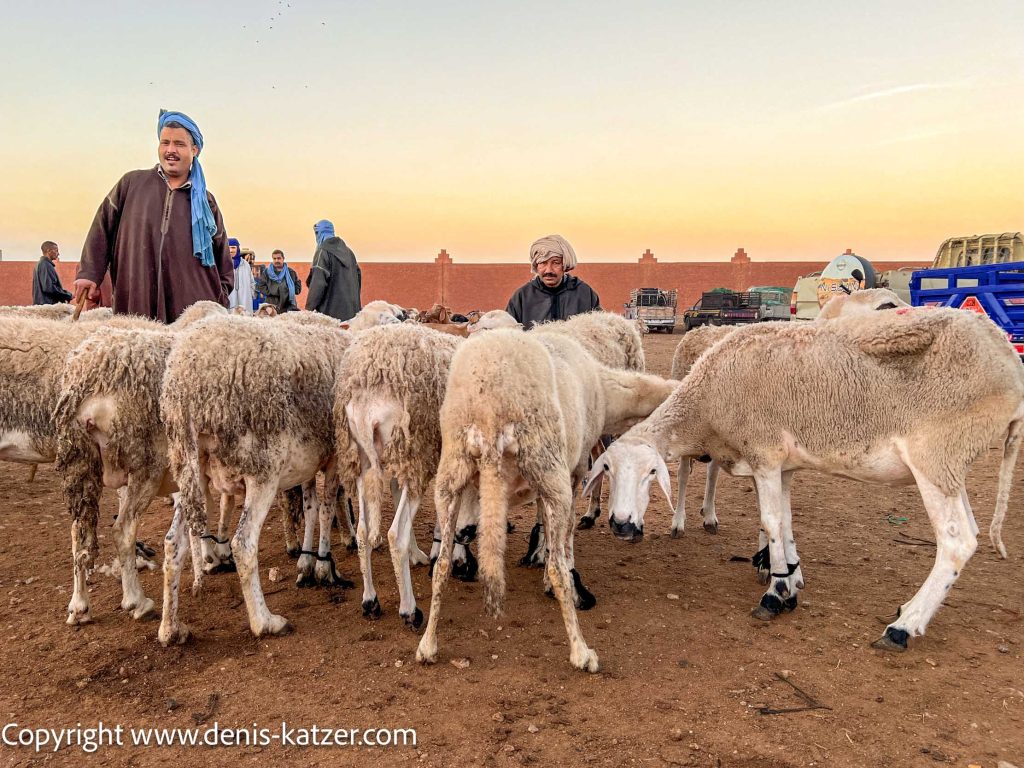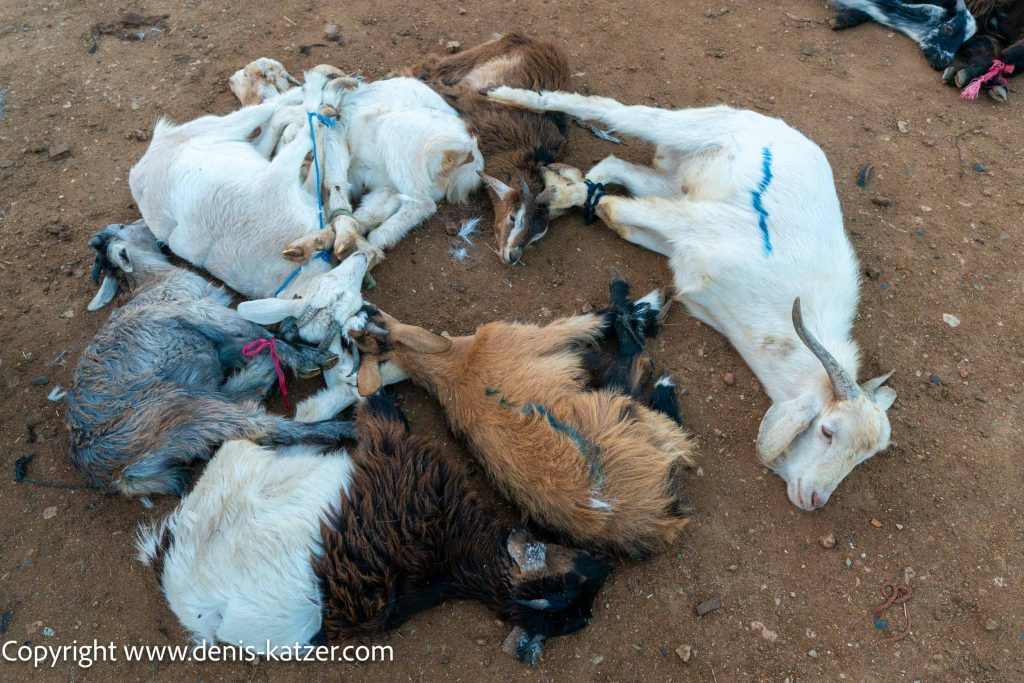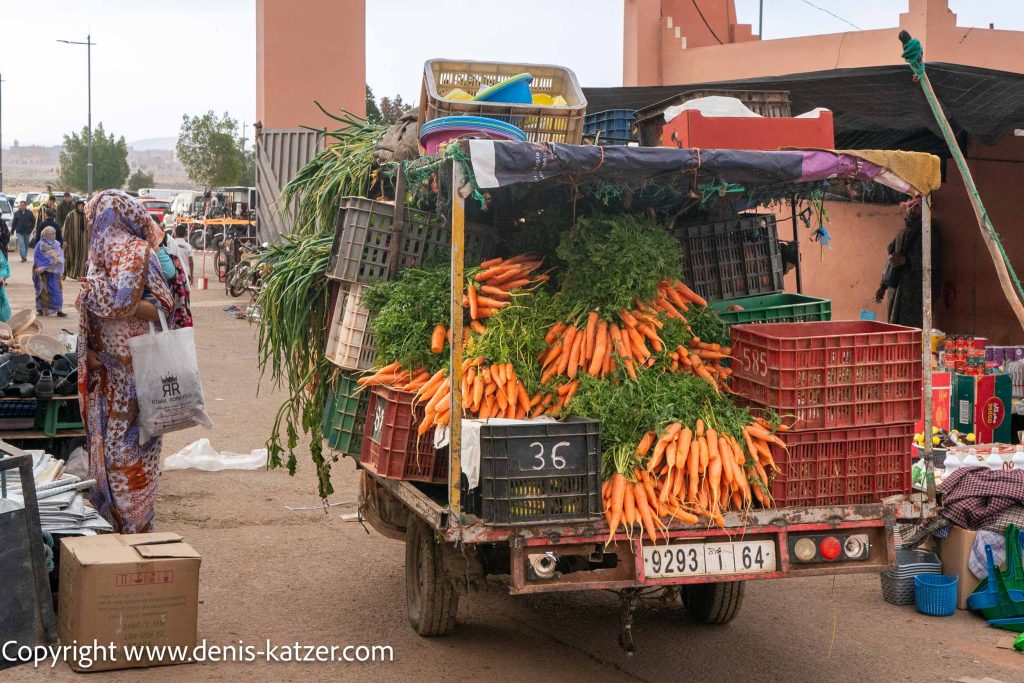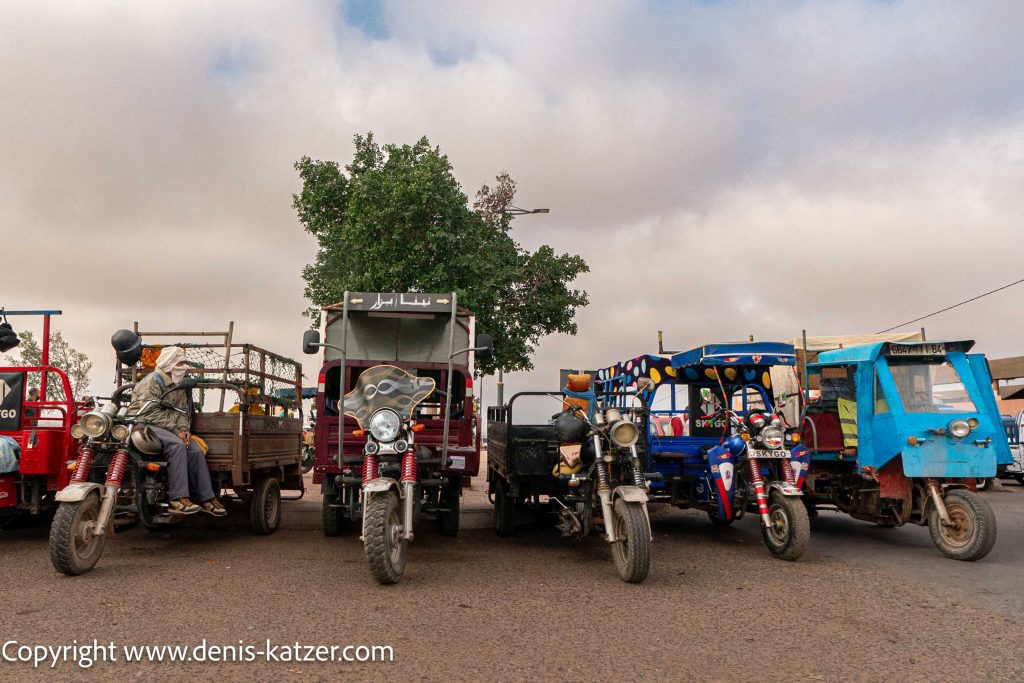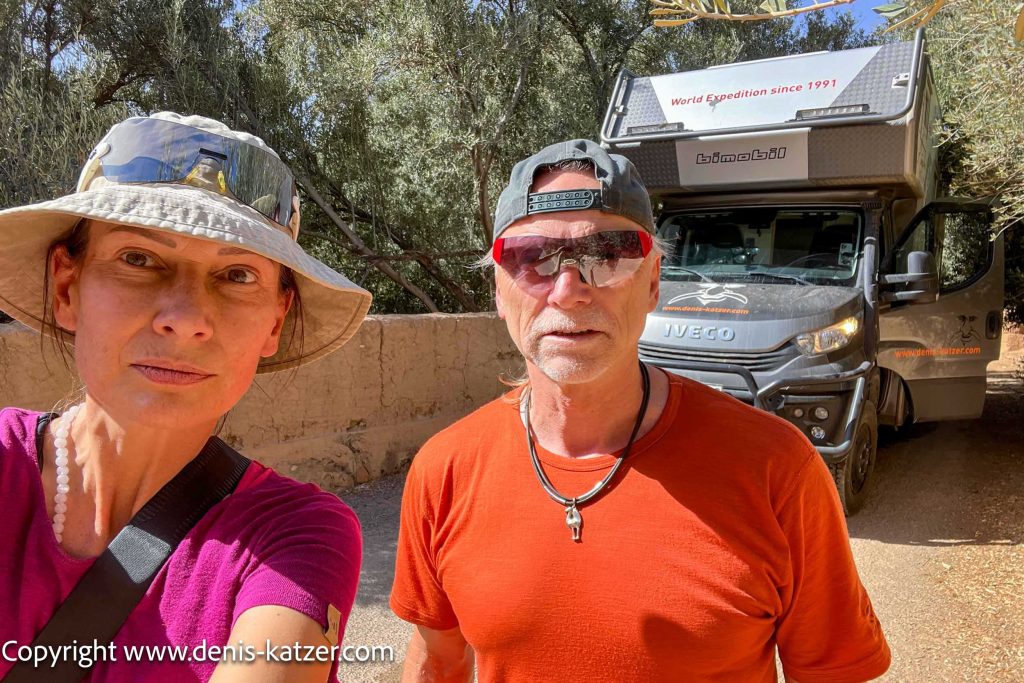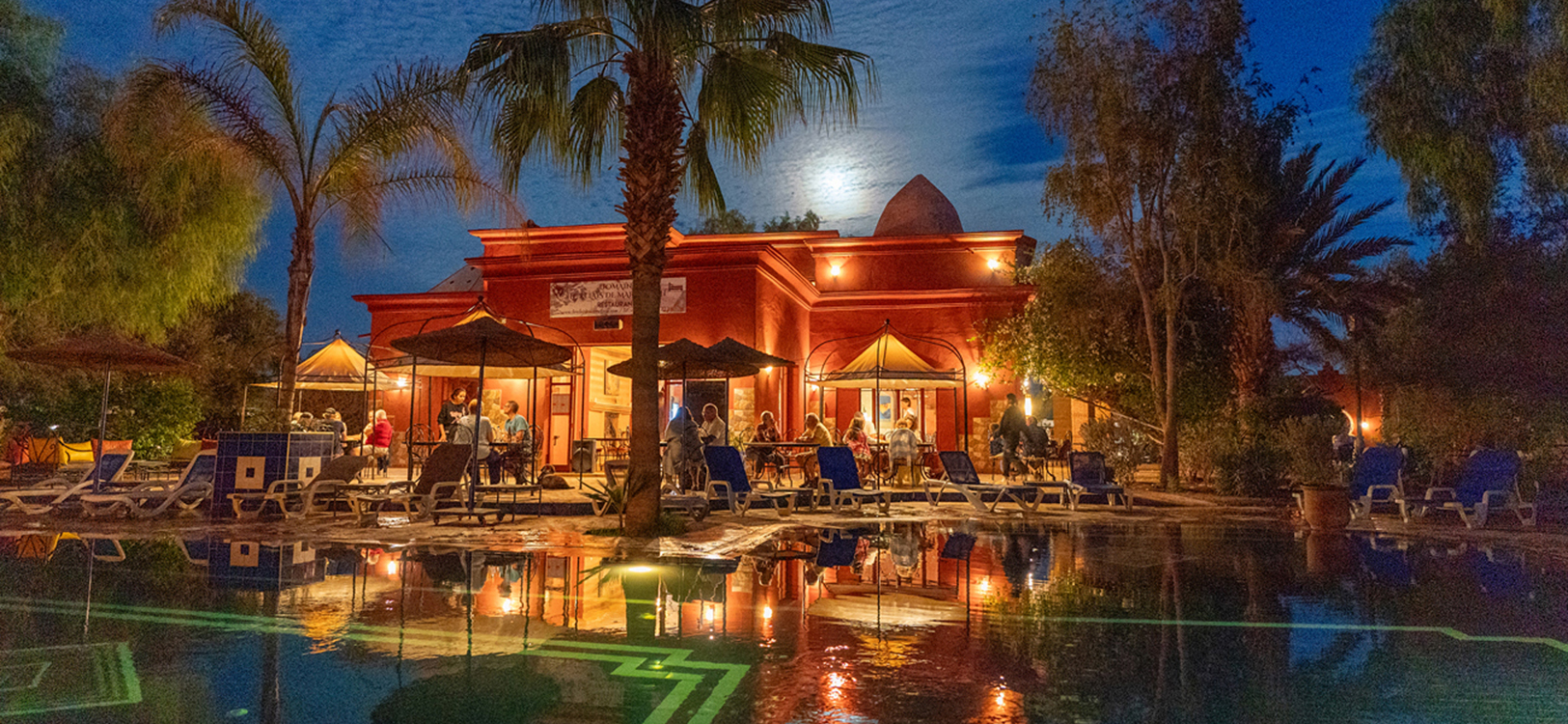
The gateway to the Sahara
N 28°58'52.1" W 010°04'23.1"
Day: 02/16/2024
Day: 441
Camp 80
Country: Morocco
Place: Guelmin
Latitude N: 28°58’52.1″
Longitude W: 010°04’23.1″
Kilometers per day: 65 km
Total kilometers: 11,896 km
Height: 10 meters
Temperature day max: 31°
Night temperature: 18 °
We leave the Plage Blanche behind us and drive on to spend the next night at a campsite near the desert town of Guelmin. The route is picturesque and takes us through a varied landscape with impressive, sometimes barren and hostile-looking nature. The route includes a mixture of desert areas and the foothills of the Anti-Atlas Mountains. From time to time we pass small villages and oases that give us an insight into rural life in the region.
The southern part of Morocco, especially near the Sahara, suffers from a chronic lack of rain. The arid climate of this region often results in less than 100 mm of rain per year. Hot, dry winds from the Sahara and stable areas of high pressure also prevent rain from forming, and the Atlas Mountains block moist air masses from the north and west, which further exacerbates the water shortage. Climate change exacerbates these problems by increasing temperatures, which increase evaporation, and irregular rainfall patterns, which make precipitation even less frequent.
The consequences are serious: water shortages are affecting agriculture and drinking water supplies, progressive desertification is worsening soil quality, and many people are migrating due to economic difficulties. Morocco is pursuing various strategies to meet these challenges. These include the construction of dams and improved irrigation systems, the introduction of drought-resistant plant species and initiatives for reforestation and combating desertification. Both the Moroccan government and international organizations are working to improve the living conditions of the population in this region.
Hasan, the campsite owner, has told us that we can visit the most famous camel market in the whole of Morocco, also known as the “Moussem of Tan Tan”, today, on Friday evening. That’s why we didn’t stay at the campsite for long and set off to drive to the desert town of Guelmin, also known as the “Gateway to the Sahara”. Guelmin is located around 200 km south of Agadir, close to the Atlantic coast, and has a relatively small population of around 120,000.
The city has a long history as a trading center dating back to ancient times. Guelmin was once an important hub for caravans traveling through the Sahara. Guelmin was already an important trading center in the 11th century, particularly for the trade in gold, salt and slaves. These caravan routes connected sub-Saharan Africa with northern Morocco and the Mediterranean, which meant that Guelmin played a central role in trans-Saharan trade. Over the centuries, Guelmin continued to develop as an important trading center, especially in the 19. and early 20th century. The city was an important link between the Moroccan cities and the nomadic tribes of the Sahara. The camel market, which is still a central attraction today, has its roots in this long history of trade and interaction between different cultures and regions.
Guelmin remains an important trading center to this day, combining both traditional and modern aspects of trade. The town is known for its weekly animal market, which attracts traders and visitors from all over the region, underlining Guelmin’s historical importance as a trading hub. When we arrive at the camel market, the traders are already packing up. We are obviously too late and try to catch at least a glimpse of one of the largest and most famous animal markets in Morocco. The market normally takes place weekly on Saturdays, but many traders arrive on Fridays to offer their animals.
As there is not much left to see at the animal market, we go to the vegetable market, which typically takes place at the same time as the animal market. It is known for its variety of fresh produce and attracts both locals and visitors who want to experience the hustle and bustle and colorful offerings. Here you will find an abundance of local vegetables as well as fruit, other agricultural products and a variety of spices that are essential for Moroccan cuisine. The range includes fresh coriander, ground and whole cumin, paprika as a ground spice or in dried form, fresh or ground turmeric, ginger, cinnamon in sticks or ground, and saffron in small quantities for color and flavor. These spices are offered by specialized traders directly from local farmers and contribute to the diversity and authenticity of the culinary scene.
The atmosphere is usually lively and full of color, making these markets an important social and economic center in the region. However, there is not much left to see at this hour, as most of the traders are already packing up their stalls. We decide to spend the night in the large parking lot next to the two markets so that we can experience the animal market in all its vibrant liveliness as the sun rises in the morning. In the meantime, we are no longer alone. A considerable number of campers have also spent the night here to take advantage of the early morning hours to visit the animal market.
The animal market in Guelmin, also known as “Souk El Hed”, is an important hub for the livestock trade and one of the largest and best-known animal markets in Morocco.
It is a central meeting point for traders, farmers and visitors from all over the region and from neighboring countries. In addition to camels, other animals such as sheep, goats, cattle and donkeys are also traded at the market. The variety of animals on offer makes the market a special place in Morocco. It is not only a trading center, but also an important social meeting place. People come together to do business, exchange news and socialize. It is a place where traditions and cultural customs are kept alive, and a visit to the market is often a festive occasion.
There are also numerous stalls selling local products, handicrafts and food. This includes traditional Moroccan handicrafts such as carpets, pottery and jewelry, as well as regional specialties such as spices, dried fruit and honey. This mixture of livestock trade and sale of goods gives the market a lively and colorful atmosphere.
With the challenges of the 21st century and the associated climate change, the animal trade in Morocco is facing changes. Efforts are underway to introduce more sustainable practices and improve conditions for animals in order to bring the traditional trade in line with modern animal welfare standards. There are worrying reports and concerns about animal cruelty at some animal markets in Morocco, including the well-known market here in Guelmin. These markets attract many traders and buyers, which often leads to difficult conditions for the animals.
One of the most common problems is overcrowding. Animals are often kept in cramped and overcrowded enclosures, which can not only cause stress but also injuries. In such environments, it is difficult to provide the animals with the necessary space and comfort, which significantly impairs their quality of life. Another major problem is the lack of water and food. There are numerous reports that animals are sometimes not provided with sufficient water and food for long periods of time, especially during the long market hours. This leads to dehydration and malnutrition, which can severely affect the animals’ health.
The transportation conditions of the animals also often leave a lot to be desired. Transportation to and from the market is not always carried out under optimal conditions, which can cause additional stress and health problems for the animals. Animals are often crammed into very small spaces without sufficient ventilation or breaks, which leads to further stress. One particularly serious problem is the improper treatment of animals, which leads to injuries and unnecessary suffering. This can include beatings, amateurish handling and lack of veterinary care. Such practices are not only cruel but also prohibited by law, but the enforcement of animal welfare laws often leaves much to be desired.
In view of these abuses, animal welfare organizations and activists are increasingly campaigning for better conditions and stricter controls on animal markets. They strive to raise awareness of animal welfare and implement measures to improve animal husbandry and treatment. These initiatives include educational campaigns, lobbying for stricter laws and the promotion of best practices in the treatment of animals. The government and local authorities are under increasing pressure to enforce existing animal welfare laws more strictly and to improve the situation in the markets. There are calls for regular inspections, sanctions for mistreatment and better training for traders and transporters. The aim is to improve the living conditions of the animals and ensure that they are treated with the respect and care they deserve.
Guelmin is strategically located on the old caravan routes through the Sahara and therefore has a long tradition of camel trade. These animals are not only beasts of burden for the locals, but also provide milk and meat, which are important sources of food for the people in the desert regions. Camels are vital for the Berbers and other nomadic tribes. They symbolize wealth and status and are an integral part of nomadic culture. They also play an important role in various cultural and religious festivals. The traders are often experienced camel breeders who have been in the business for generations. They bring their animals from far away, sometimes hundreds of kilometers, to sell them on the market.
One of the dealers tells us that you can also buy valuable and prestigious racing camels in Morocco. Prices vary greatly depending on pedigree, level of training and racing success. Camels from well-known and successful breeding lines, well-trained animals in their prime and those with proven racing success can cost tens of thousands to hundreds of thousands of US dollars. Depending on current market factors and individual demand, particularly sought-after animals can achieve even higher prices. As mentioned in previous videos, Tanja and I have covered almost 12,000 kilometers with camels during our 33-year journey. This is one of the reasons why we feel a special love for these animals and have a strong bond with them.
After months in the endless expanses of the desert, we are now longing for Sidi Ifni, an enchanting town on Morocco’s Atlantic coast. Here, Moroccan traditions merge with romantic Spanish colonial architecture, which is reflected in the white buildings with their blue shutters. The soft sandy beaches lure us into a Mediterranean paradise for a few days, where we want to enjoy the relaxed atmosphere and mild climate…
Here is the link to the video:
